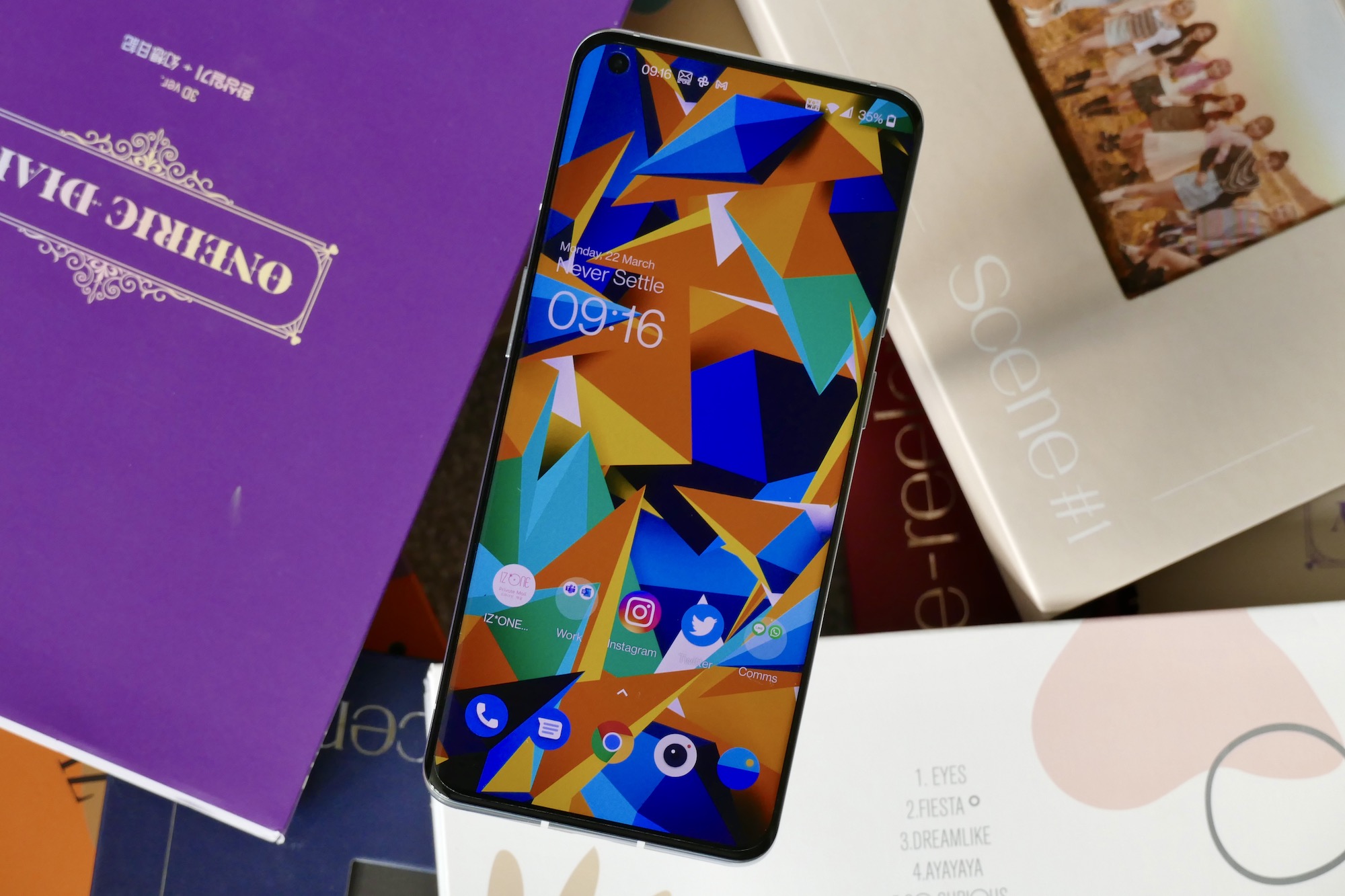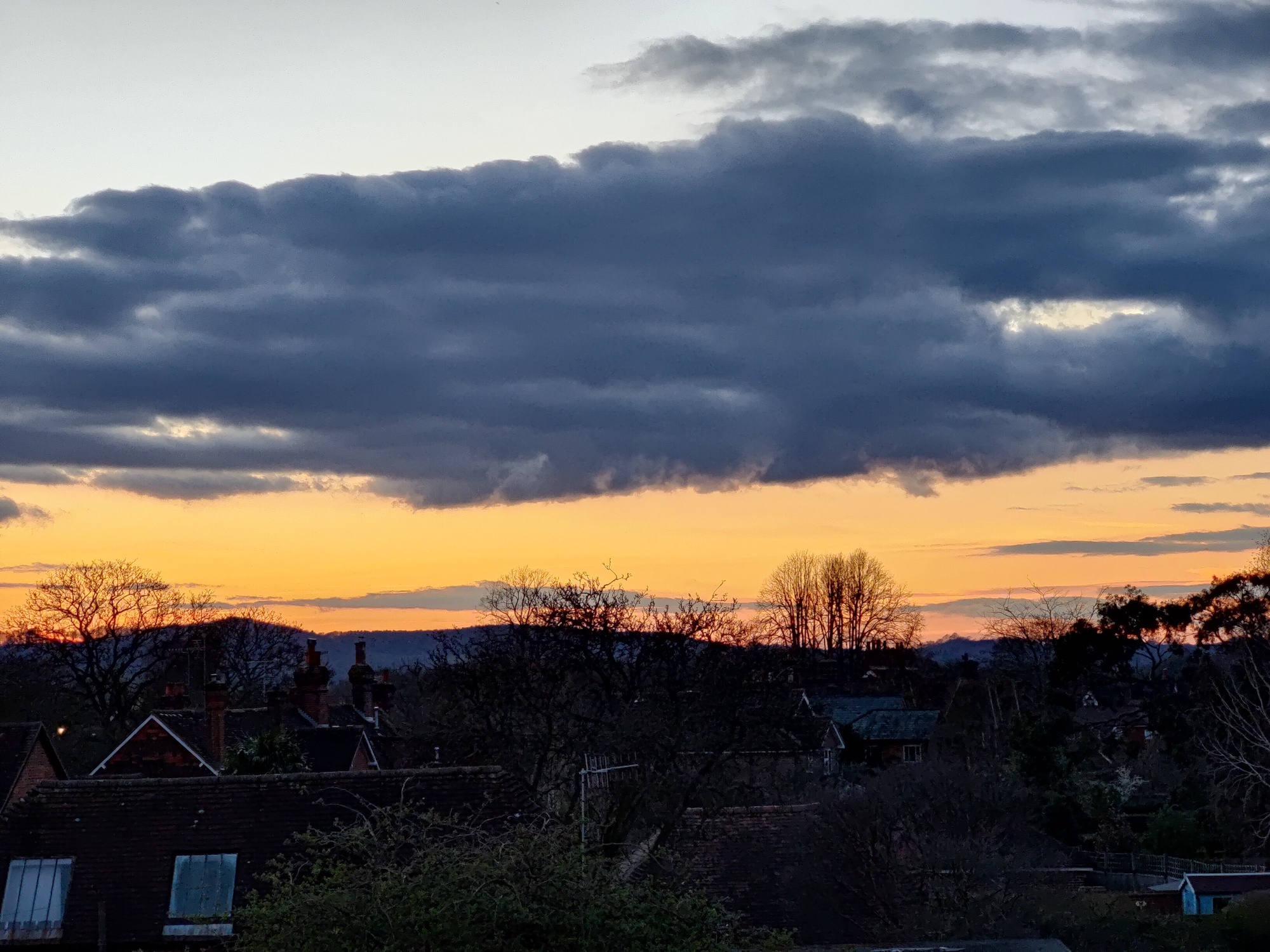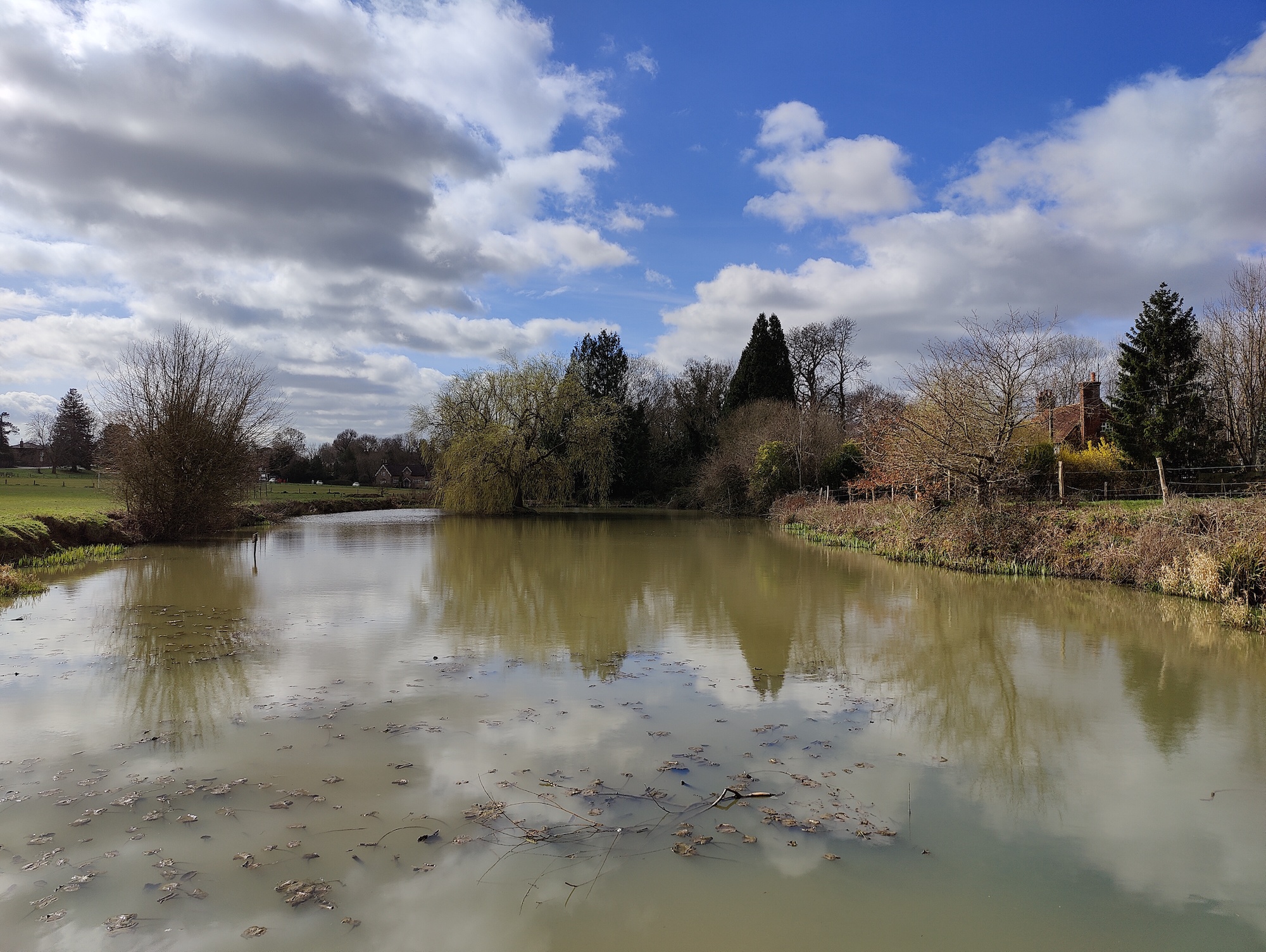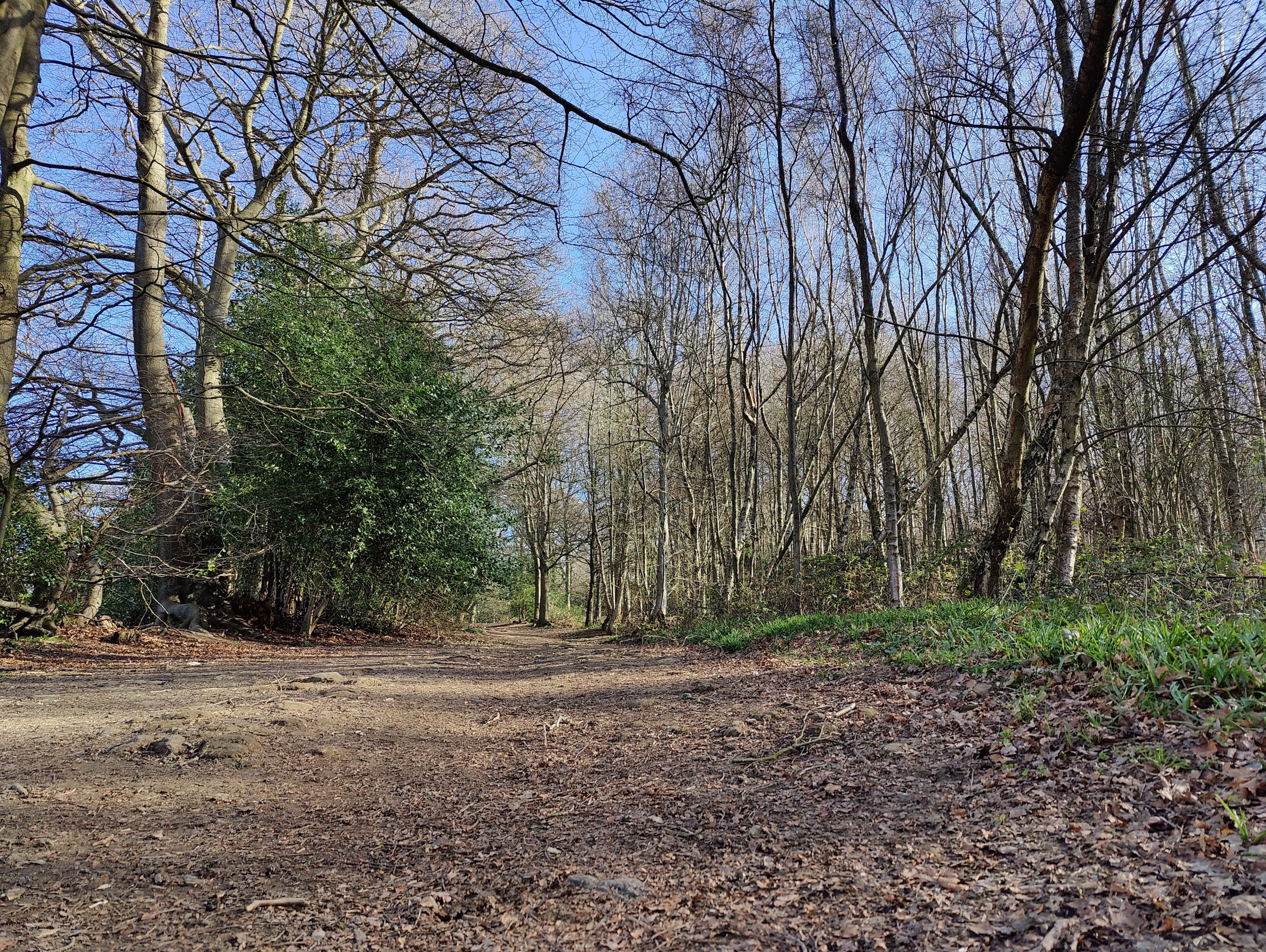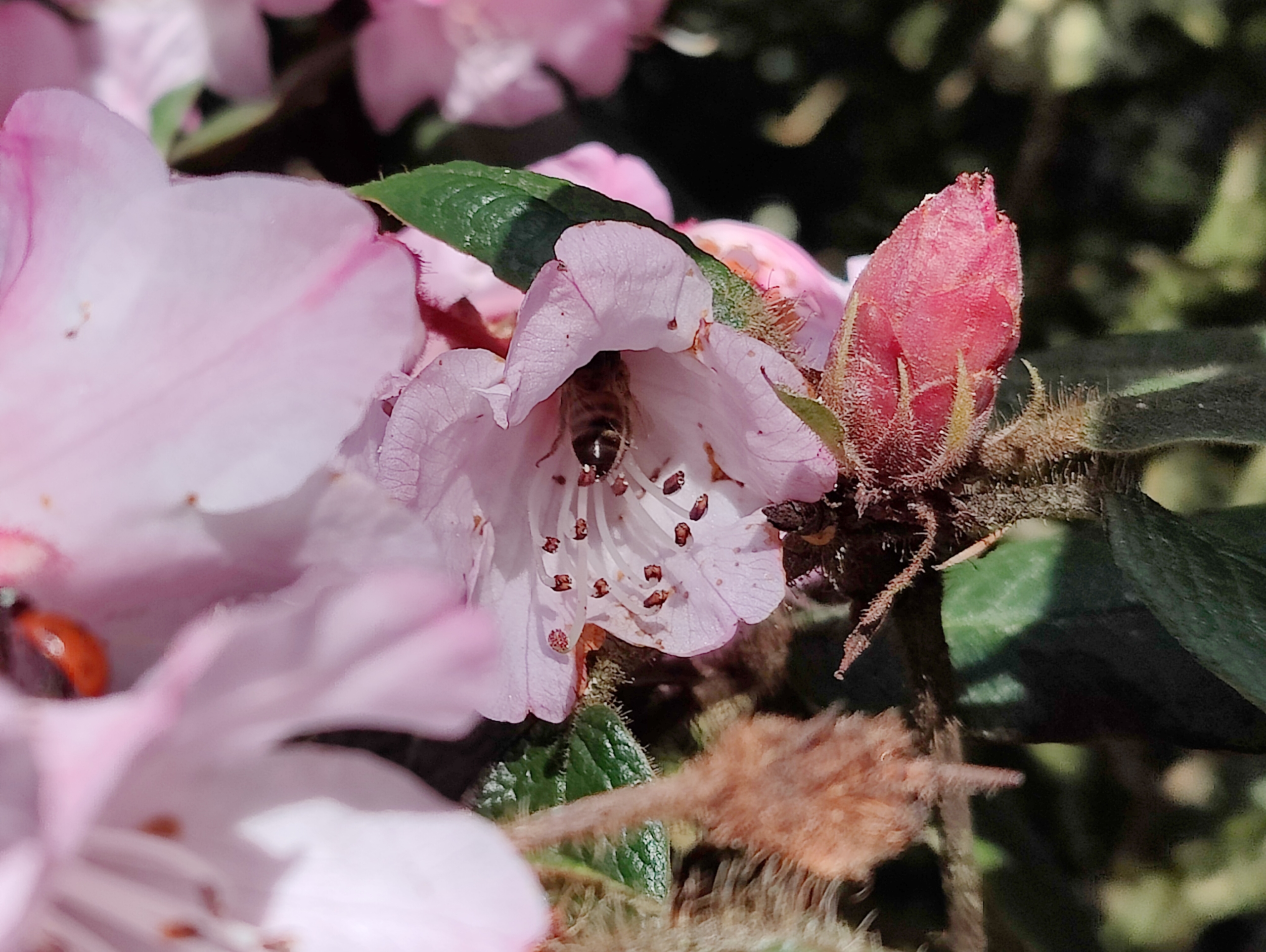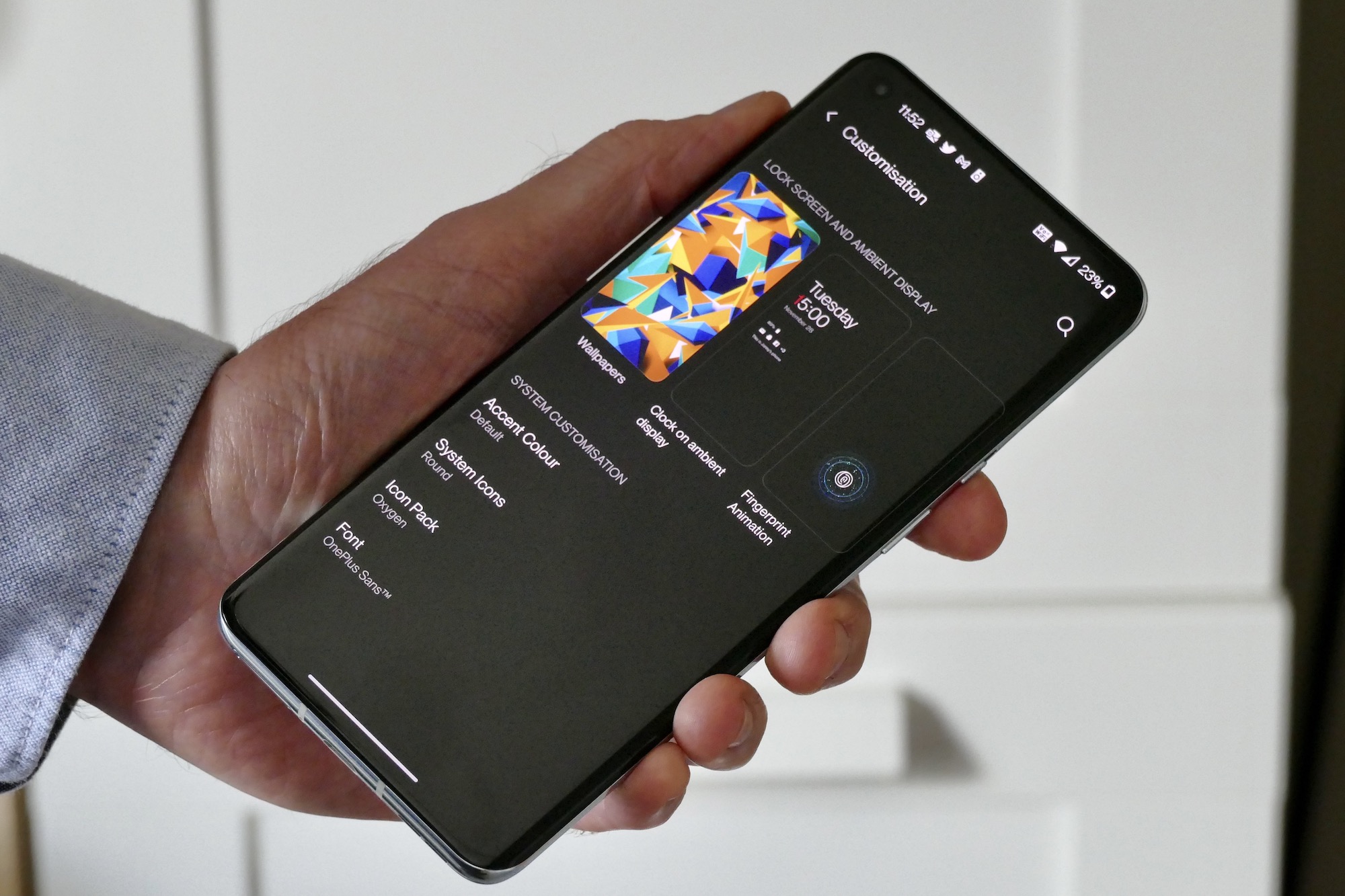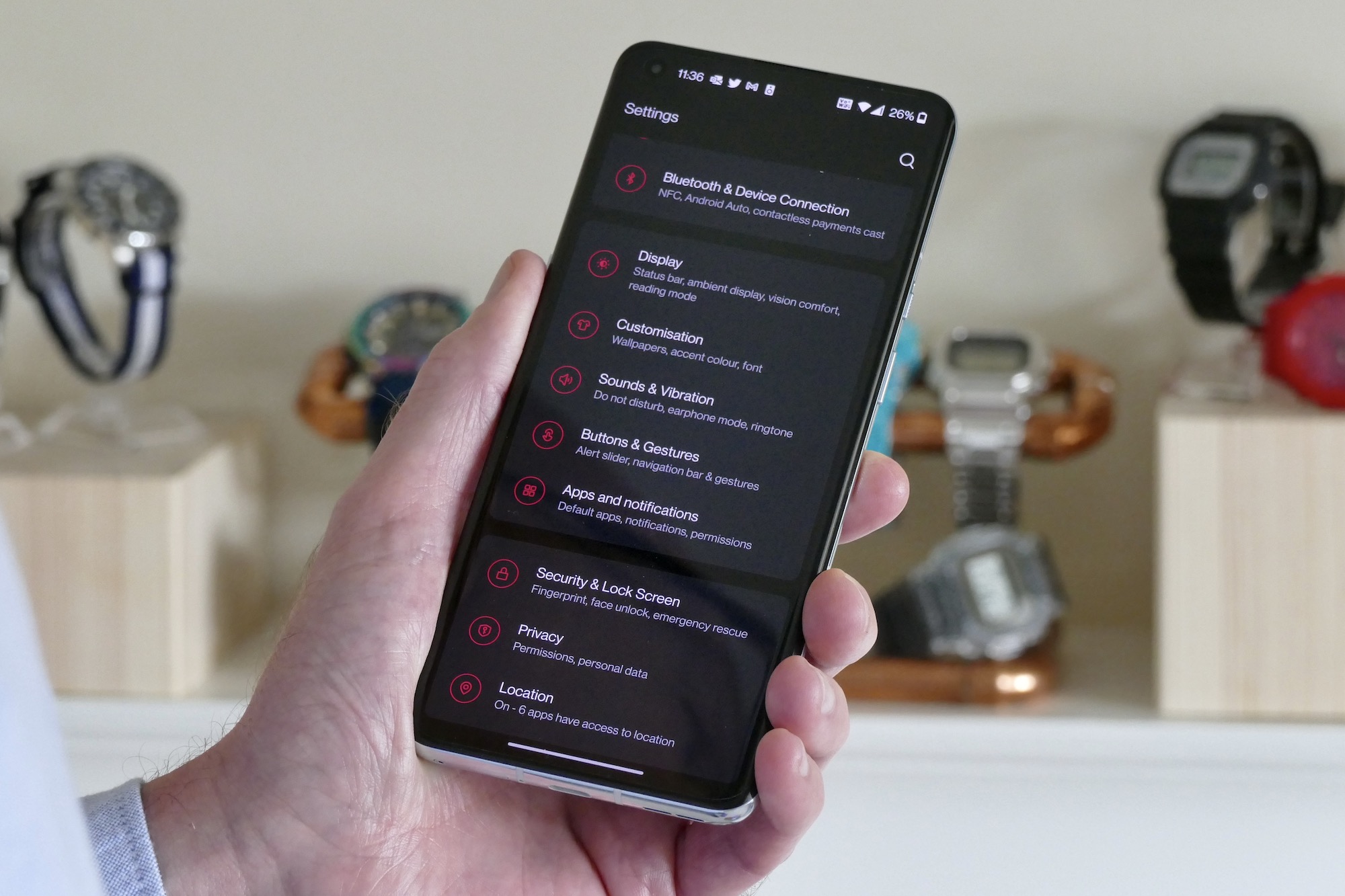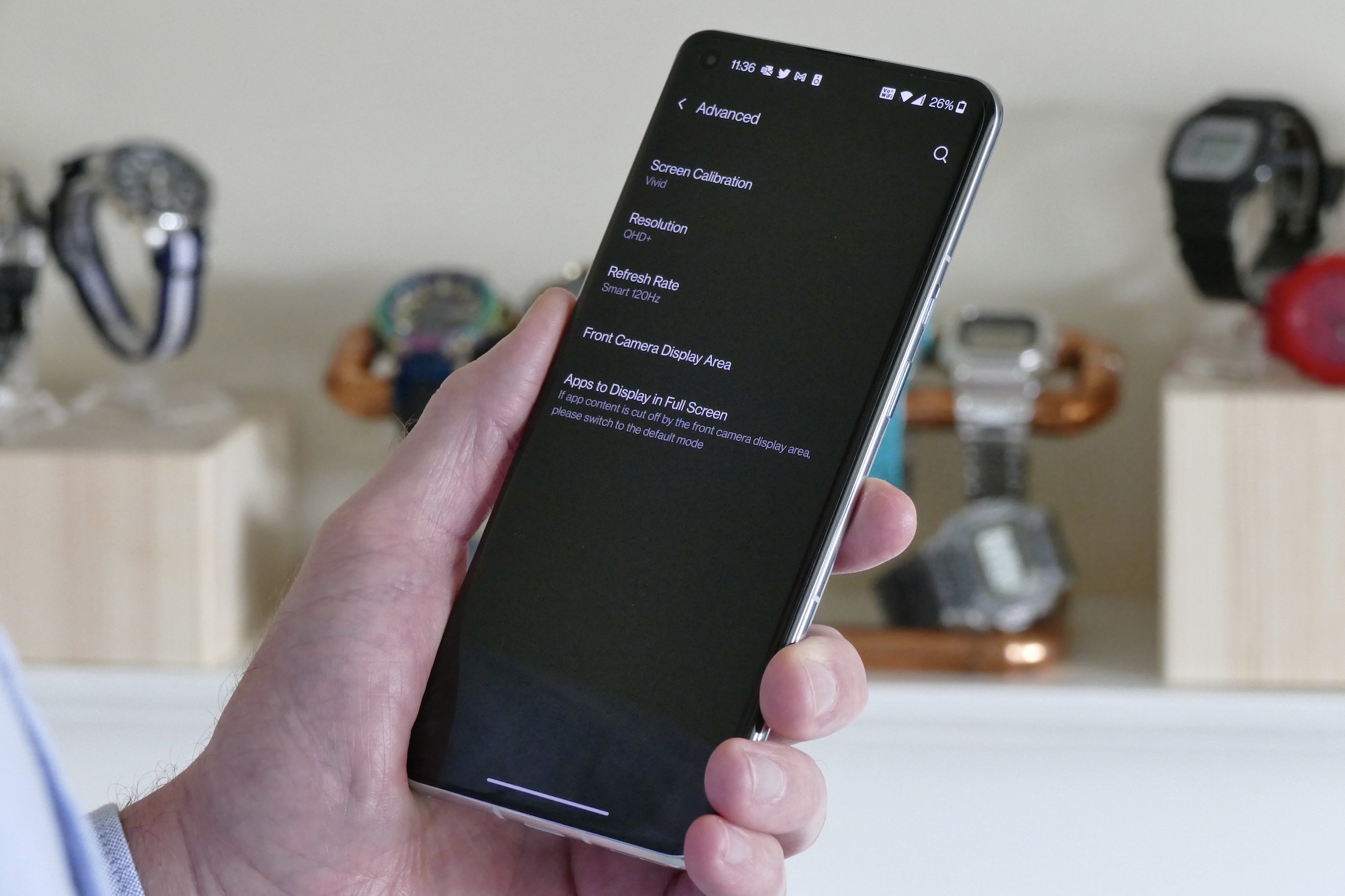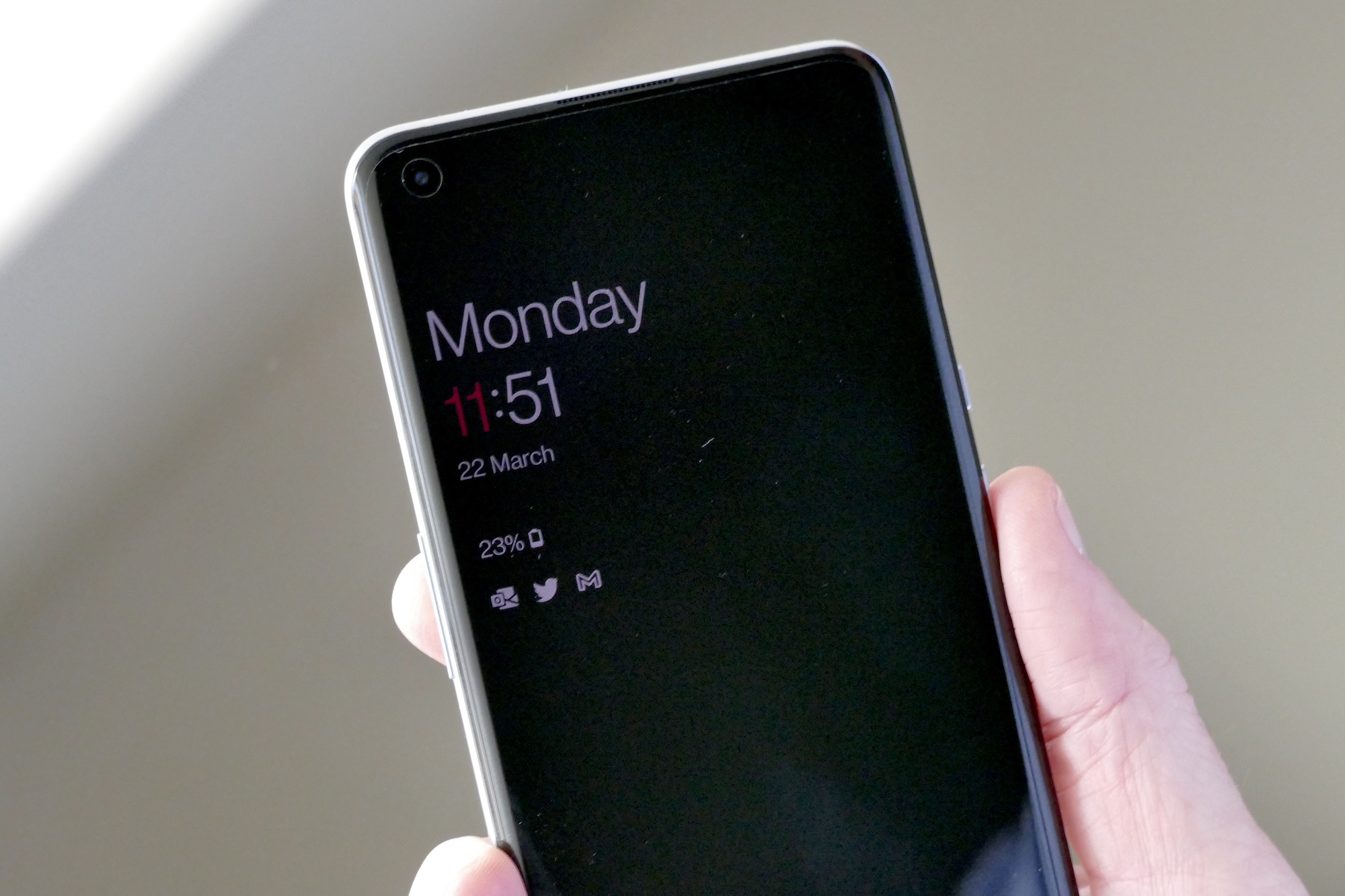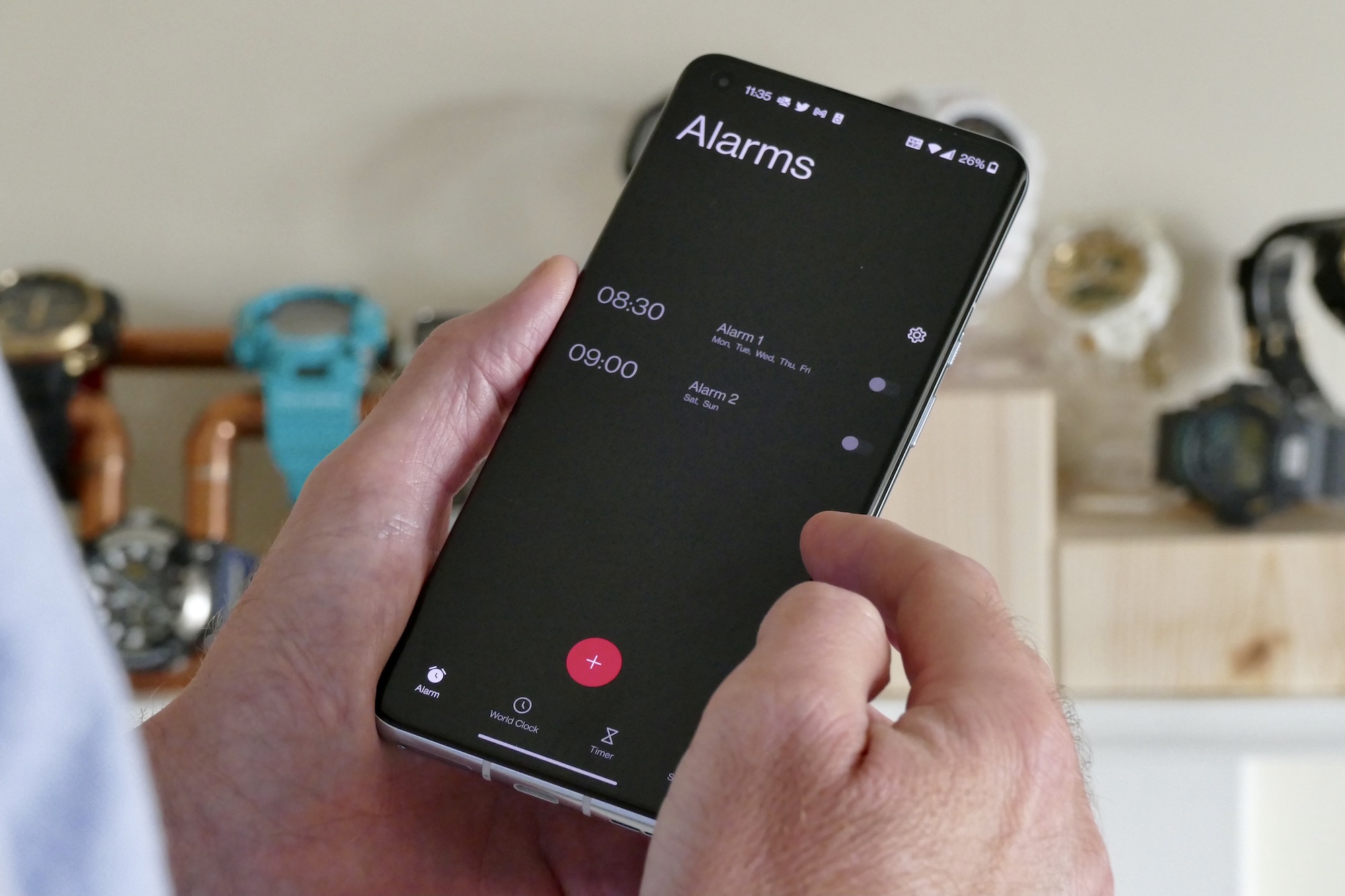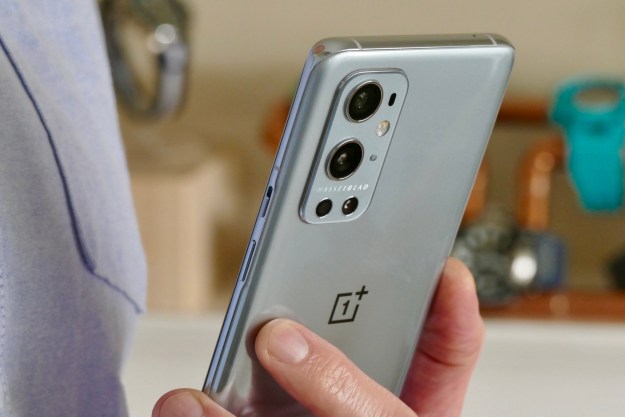
“The OnePlus 9 Pro is business as usual for OnePlus, with huge power, a stunning screen, excellent software, and ultrafast battery charging. Just don't expect the Hasselblad partnership to have transformed the camera yet.”
- All the power you could want
- A stunning screen
- Very fast wired and wireless charging
- Reliable, smooth, and quick software
- Hasselblad involvement isn't that noticeable
- At $969, it faces serious flagship competition
The OnePlus 8 Pro launched in April 2020, and is only now being replaced by the OnePlus 9 Pro. A year in OnePlus world is an absolute age, as the company has usually released a refreshed “T” model six months into a model’s life span. But that’s not the case with the 8 Pro. All this extra time should mean that the OnePlus 9 Pro is something really special, right?
It’s the first OnePlus phone released in partnership with super-expensive camera brand Hasselblad, which has lent its expertise to the OnePlus 9 Pro’s camera, and that certainly sounds special. But otherwise, the OnePlus 9 Pro looks to be as dependable as we expect from OnePlus, which isn’t necessarily a bad thing, but can being dependable also be exciting? Let’s get into more detail.
If you’re interested in the OnePlus 9, which is cheaper but not as technically capable as the 9 Pro, read our in-depth review.
Design
Less sharp-edged, considerably shinier, and more than a little weightier, the OnePlus 9 Pro has a very different look and feel from the OnePlus 8 Pro. The lovely matte finish from the 8 Pro has been replaced by a high-gloss mirror finish, seen below in Morning Mist color, which is silver to you and me. It’s more comfortable to grip due to thicker, less tapered 8.7mm sides, but it feels much more substantial in the hand. It weighs 197 grams, with a slight bias toward the camera module, making it feel slightly top-heavy.

The in-display fingerprint sensor is set really low down on the screen compared to most other smartphones. It’s in the same position as the one on the Oppo Find X3 Pro, a comparison we’ll come back to when we talk about the screen later in this review. On the side is OnePlus’s signature, and always welcome, alert slider to silence notifications.
The camera module is in the top-left on the rear panel. It’s resplendent with Hasselblad’s branding and contains four cameras, a sensor, a flash, and a microphone. It’s not as individual-looking as the OnePlus 8 Pro, or the Samsung Galaxy S21+, but it is fairly flush against the body. It’s all neat and undeniably functional, but there’s not much character. This is a problem with the OnePlus 9 Pro’s look generally — it’s not unattractive, but it doesn’t have much identity either.

Perhaps this doesn’t matter to you, and build quality is more important. You’ve got no concerns here, as the aluminum chassis is sandwiched between two panels of Gorilla Glass, and it’s all very nicely made. There’s just about enough grip from the glass body, but it will slip around on some surfaces.
I have nothing against the OnePlus 9 Pro’s style and design, but it is a little generic. When the only aspect that really tells me it’s a OnePlus phone is the alert slider, you know the rest is too forgettable.
Screen
OnePlus has never really nailed its designs, but it has rarely made a misstep when it comes to the screen. The 6.7-inch AMOLED screen has a 3,216 x 1,220-pixel resolution for a 525 pixel-per-inch density, and a variable refresh rate from between 1Hz and 120Hz. The sides have a less pronounced curve and more noticeable bezels (but only just) compared to the OnePlus 8 Pro, to help avoid unwanted screen activations. I’ve still found the screen to be highly reactive to side touches, and I often accidentally open the camera app or attempt to change the wallpaper just by holding the phone in my hand.
It’s a beautiful screen, with rich colors and a natural tone that edges toward warm rather than cool, as well as spot-on contrast. By default, it’s set at an FHD+ resolution, but it’s worth taking the battery hit and having it at QHD+ when watching compatible videos. It’s just glorious. This K Choreo version of Iz*One’s Fiesta is packed with color and detail on the OnePlus 9 Pro’s screen.
How does it compare to the 8 Pro, which is itself no slouch in the visual department? It’s not better or worse, but it is different. The 8 Pro’s screen is a little more vibrant, while the 9 Pro’s is a tiny bit more natural, which does introduce some softness, resulting in the 8 Pro sometimes looking more detailed due to sharper and more defined edges. The 9 Pro’s screen is by no means a step forward over the 8 Pro. When you place it alongside the Oppo Find X3 Pro, it looks identical. The positioning of the in-display fingerprint sensor and hole-punch camera, as well as specs like 10-bit color depth and HDR10+, suggest it’s probably the same panel anyway.
Camera
In our year of waiting for the OnePlus 9 Pro, the company has been working on the camera, which although good in the past, has not managed to surpass or sometimes even equal those of the competition. To change this, OnePlus is working with Hasselblad, a Scandinavian purveyor of mega-expensive cameras, and a company with a very rich photographic history. It’s a three-year partnership that begins with assistance on the software and will move to the pair collaborating on hardware in the future.

What does it mean for the OnePlus 9 Pro? The camera has a software-based feature called Natural Color Calibration with Hasselblad on board, which promises to make colors more “perceptually accurate,” according to the press blurb. Hasselblad has also worked on the Pro mode, so you get an orange shutter button, just like on a Hasselblad camera, and a specially recorded Hasselblad-style shutter button sound.
The biggest issue for me is understanding what Hasselblad has done in the camera.
Underwhelmed? I don’t blame you, but this is just the beginning of the partnership, and it will take time for a significant alteration to the OnePlus camera to happen, so we should keep expectations in check. That said, Hasselblad branding is slapped across the camera module, and plenty of noise has been made about the link-up already, so it better do something. Prior to release, OnePlus issued a series of software updates that consistently improved the camera ability, so while I was lukewarm about its performance in my initial review, it has gotten steadily better.

Before talking about the performance, here are the camera specs. The main camera uses a 48-megapixel custom Sony IMX789 sensor with an f/1.8 aperture and optical and electronic image stabilization. It’s joined by a 50MP f/2.2 aperture wide-angle camera and an 8MP f/2.4 telephoto camera with a 3.3x optical zoom. There’s also a 2MP monochrome camera, which can be used on its own, along with a dual-LED flash and a 16MP selfie camera.
The OnePlus 9 Pro’s camera does take better photos than the OnePlus 8 Pro, and after the updates, it’s much more consistent too, with better balance, more color pop, and a lovely natural tone. I’ve grown to like the photos taken by the OnePlus 9 Pro, but the problem with understanding what Hasselblad has done in the camera remains. The Natural Color Calibration is on all the time, so any inherent “Hasselbladness” in the photos is entirely lost on me, as someone without experience of a Hasselblad camera.
To really try and see what the OnePlus 9 Pro’s camera is like, I’ve spent more time than usual comparing its photos to those taken by other cameras. This highlights how difficult it is to spot something that may make the OnePlus 9 Pro’s photos special. The above gallery shows photos before the software update, while the gallery below shows some examples taken after the main software update, which arrived just before the phone’s launch.
I do like the photos taken with the OnePlus 9 Pro, but if I didn’t know Hasselblad worked on the phone with OnePlus, I wouldn’t be looking any deeper at all, simply because it’s a good camera and nothing more. It’s better than previous OnePlus cameras, certainly, and the team is clearly working to improve it all the time, but the efforts of the two teams working together have yet to be fully realized.
Software and performance
OxygenOS version 11 with Android 11 is installed, and it’s superb. It’s essentially the same software seen on the OnePlus 8T, so don’t expect new features to go along with the new phone. Not that this matters, as OxygenOS is always a joy. Whether it’s the new always-on screen, the effective dark mode, the smooth menus, the beautiful fonts and overall design, the clear notifications, or deeper memory and power management tools, the software is among the very best you can use on an Android smartphone.
The Qualcomm Snapdragon 888 processor provides all the power you could want — there were absolutely no performance issues for me — and there is a choice of either 8GB or 12GB of RAM, with 128GB or 256GB of storage space. It’s excellent for gaming. Genshin Impact plays very well, with only a slight frame rate drop during busy battle scenes, although the phone does get warm to the touch when playing for long periods. I’ve been using the 12GB/256GB model, but can’t imagine I’d notice any difference in speed if I used the 8GB model. However, there’s no expandable storage space, so you must consider if you’ll need the extra built-in storage in the future before buying this phone.
Early problems with Wi-Fi range, and WhatsApp video call performance, have also been cured through software updates just before launch, and call quality has been uniformly very good. And although the in-display fingerprint sensor is set quite low down on the screen, it’s lightning-fast. Special mention should go to the haptics as well, which are even more subtle and tactile than on the OnePlus 8 Pro.
Battery and charging
It’s a 4,500mAh cell taking care of all the visuals, gaming, and camera use on the OnePlus 9T. I’ve found it’s good for a day’s worth of use, but not much longer, with a charge needed each night almost regardless of the day’s activities. Ninety minutes of Genshin Impact consumed 25% of the battery, so hardcore gamers will need to charge even more often.

The OnePlus 9 Pro uses the proprietary Warp Charge 65T fast charge system, so you get a charger and a USB Type-C cable in the box, which must be used to get the fastest speeds. OnePlus says it’ll go from zero to 100% in 28 minutes, so can it? Almost, yes. In my tests, it took 31 minutes. I’m not going to quibble over three minutes. It’s still faster than most of the competition. Helpfully, like Warp Charge 65, the Warp Charge 65T block pumps 45 watts into other gadgets that can take this amount of charging power.
OnePlus’ Warp Charge 50 wireless charging system has been given a speed boost, but you need to buy OnePlus’ own $70/70 British pounds wireless charging dock to take advantage of it. It promises to deliver a full charge in just 43 minutes, and in my tests, it easily manages this. Unlike the previous version, the USB Type-C cable is not built into the charger, but you do need to use OnePlus’s own charging block and cable to get full speed. The cable, not the block, is included in the box, but at about a meter long, any versatility gain by not fixing it to the charger ends up being lost.
Price and availability
The OnePlus 9 Pro costs $969 for the 8GB/128GB model, or $1,069 for the 12GB/256GB model. It’s available to pre-order on March 26 and set for release on April 2. In the U.K. the OnePlus 9 Pro costs 829 British pounds for the 8GB/128GB model, and 929 pounds for the 12GB/256GB version. The phone will be available to pre-order in the U.K. on March 23.
Our take
There’s both everything I want and also everything I unfortunately have come to expect from a OnePlus phone in the OnePlus 9 Pro. There’s the top mobile processor at the moment, along with an excellent screen, super-smooth and reliable software, and fast battery charging, which are all the things I want and the stuff OnePlus can do in its sleep. A camera that almost, but not quite, lives up to expectations, an acceptable but not inspiring design, and a price that’s slightly higher than I really want it to be are aspects I’ve come to expect from OnePlus over the past year or so. It’s business as usual.
If you buy one, you’ll be very satisfied, but you may feel it’s missing something truly special.
I love the reliability of OnePlus phones. Using one on a daily basis is entirely hassle-free, and the combination of OxygenOS and masses of power means you’ll struggle to find a better overall smartphone user experience today. However, the extent of Hasselblad’s involvement in the camera is too hard to pinpoint right now, so it doesn’t quite have that special extra that makes me tingle with excitement when I take photos, but there’s potential for the future.
OnePlus fans will be happy with the OnePlus 9 Pro, and while the camera is definitely an improvement over the OnePlus 8 Pro’s, everything else is only a small generational step up, so upgrading from the 8 Pro isn’t really worth it unless you’re really disappointed by its camera. For those who aren’t a committed OnePlus fan, it’s a harder sell, as some aggressive pricing from Apple and Samsung this year means better smartphones can be had for less money. If you buy one, you’ll be very satisfied, as it follows OnePlus’s tried-and-tested, dependable phone formula, but you may feel it’s missing something truly special.
Is there a better alternative?
The OnePlus 9 Pro faces serious competition in the U.S.. At the time of writing, the Samsung Galaxy S21 Ultra costs $1,000 from Amazon, and it’s the better purchase due to its superb camera, beautiful screen, and overall performance. The Apple iPhone 12 Pro remains a fantastic purchase if you’re not set on an Android device, and at $1,000, it’s equally as competitively priced as the Galaxy S21 Ultra.
In the U.K. the phone is a better value, as it’s cheaper than both of the above devices, and cheaper even than the 950 British pound Galaxy S21+ 5G. It’s significantly cheaper than the 1,100 pound Oppo Find X3 Pro, but even the 8GB/128GB version can’t match the Xiaomi Mi 11 5G’s value at 750 pounds.
How long will it last?
The OnePlus 9 Pro’s powerful processor, excellent screen, 5G connectivity, and fast charging means it will give you at least two years of use before you’d even consider upgrading. Three years is entirely feasible if you’re not a hardcore gamer. The phone has an IP68 water-resistance rating, but it is made from glass so you may want to put it in a case.
OnePlus says the OnePlus 9 will receive two years of new Android updates, plus an additional one year of security updates, making it one of the better companies in terms of dealing with crucial software updates.
Should you buy it?
Yes, it’s an excellent smartphone, but for all the promise of the Hasselblad partnership, it still lacks that something special, especially since the price is higher than that of some of the best smartphones you can buy today.
Editors' Recommendations
- OnePlus’ next foldable phone may get a huge camera upgrade
- Does the OnePlus 12 have a curved screen?
- Best OnePlus Open deals: Save $200+ on the foldable phone
- If you like Genshin Impact, you’ll love this new OnePlus phone
- The best Android phones in 2024: the 14 best ones you can buy


